Seeing the Terracotta Army in person was pretty special and hard to describe in words. For those of you who don’t know the history behind them, I will give you a brief explanation. Qin Shi Huang became the King of Qin at the age of 13 and then, China’s first emperor, known as Emperor Qin, when he was 38 after conquering the other warring states, unifying China in 221 BC. His accomplishments during his reign were pretty remarkable. A few of his projects included the unification and completion of the Great Wall of China(see my earlier blog on The Great Wall), a national road system, and the mausoleum guarded by the life-sized Terracotta Army. All of this was done in 36 years. I’m not sure what you were doing as a 13 year old but I was playing club soccer, video games and girls were kind of a thing. I do realize I wasn’t born into a Chinese dynasty even though my grandfather is part Chinese so, maybe that’s part of it. Either way his accomplishments were pretty spectacular.
The Terracotta Army was discovered March 29th, 1974 by some farmers digging a water well. They have used ground-penetrating radar to determine Emperor Qin’s mausoleum covers a 38 square mile area that encompasses the Terracotta Army.
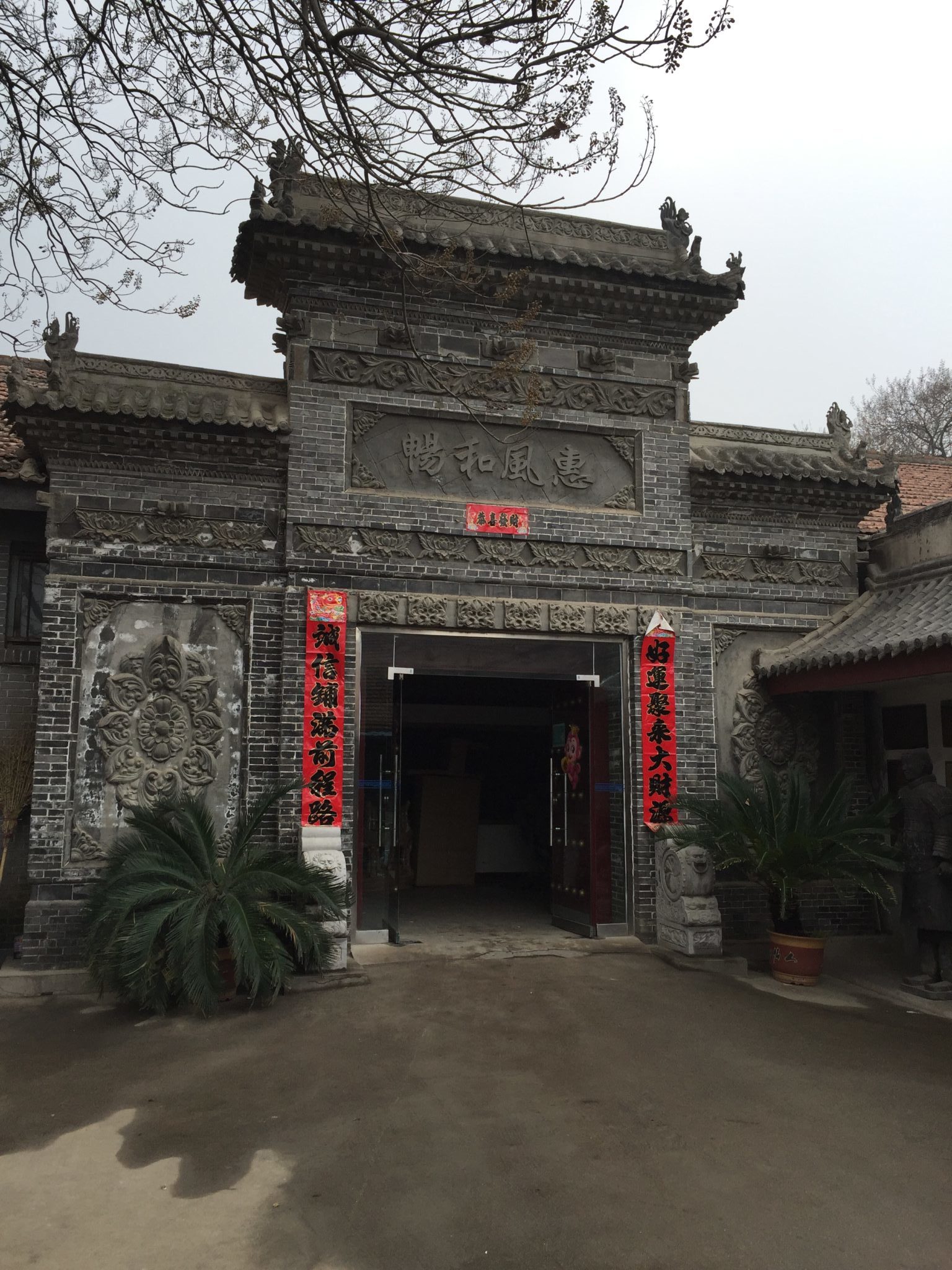
Before going to the site, we toured the official government sanctioned store that is allowed to replicate the Terracotta Army with the actual clay used to make the original army. They make replicas ranging from 3″ up to life size options that can be shipped anywhere in the world. Once they complete the clay molds, all of the finishing details are done by hand before they are fired in the kiln. From the waist down, the molds are solid and from the waist up they are hallow to help with stability. The replica making process was truly incredible and done in a similar process as the original Terracotta Army.
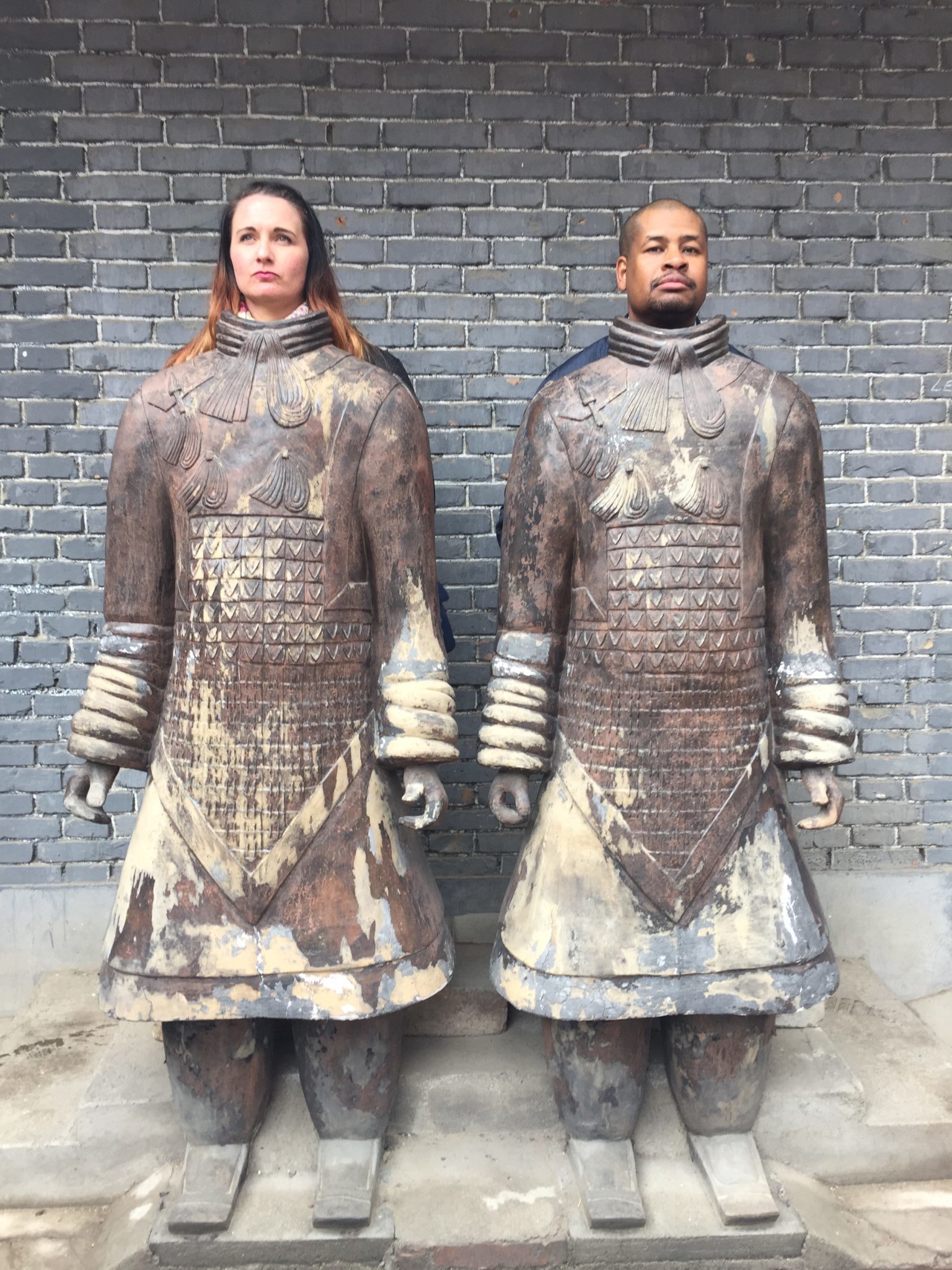
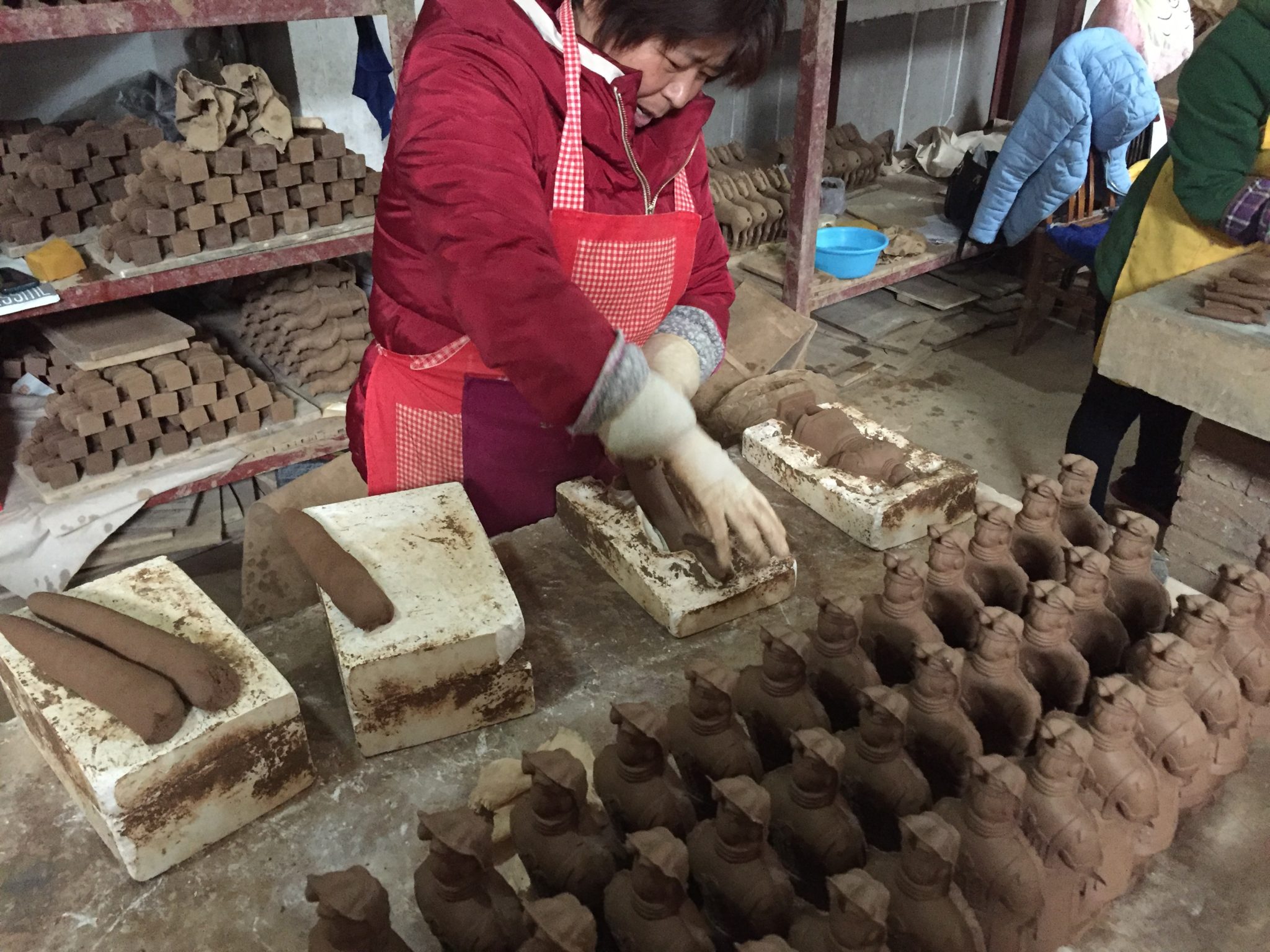
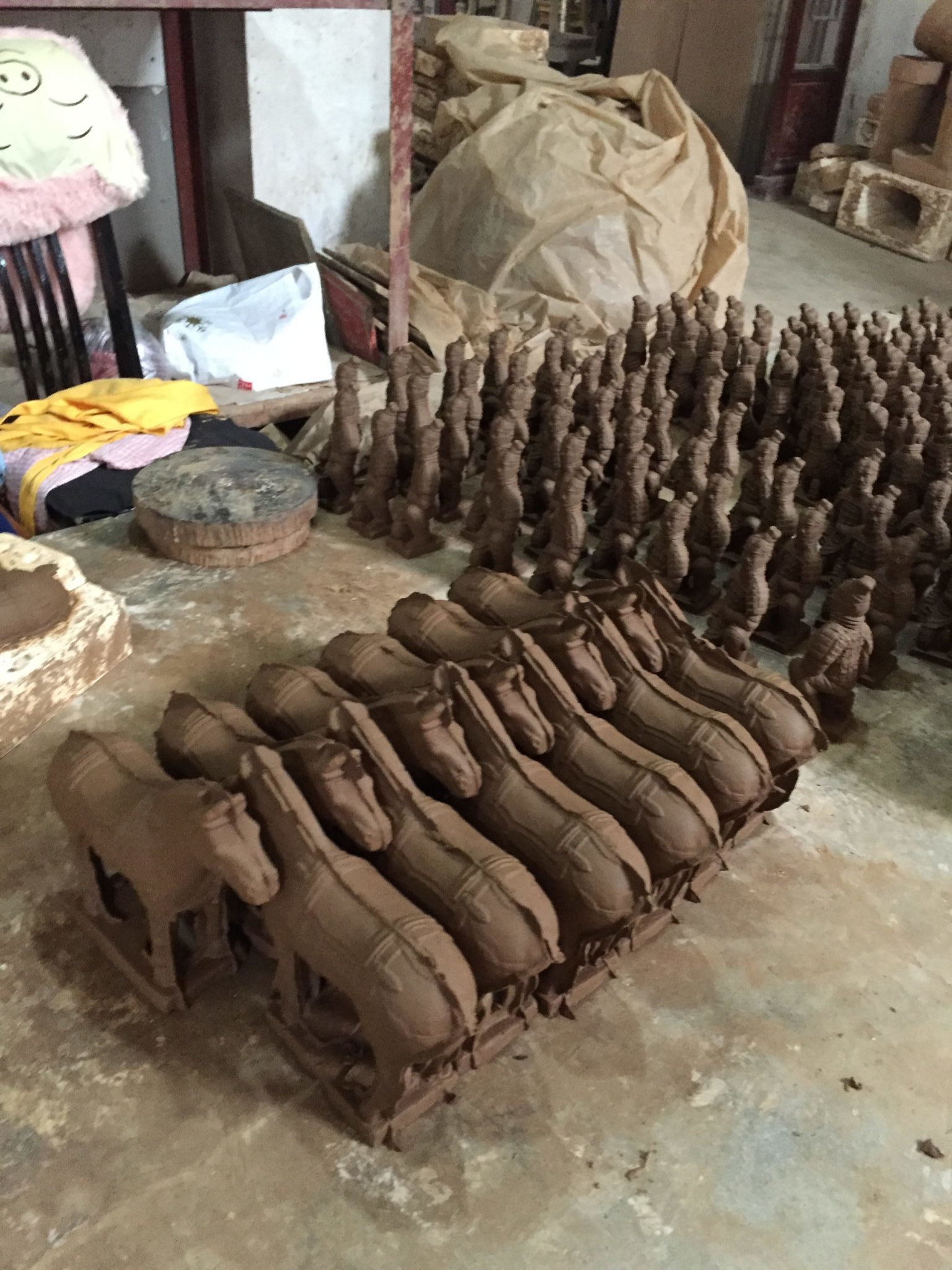
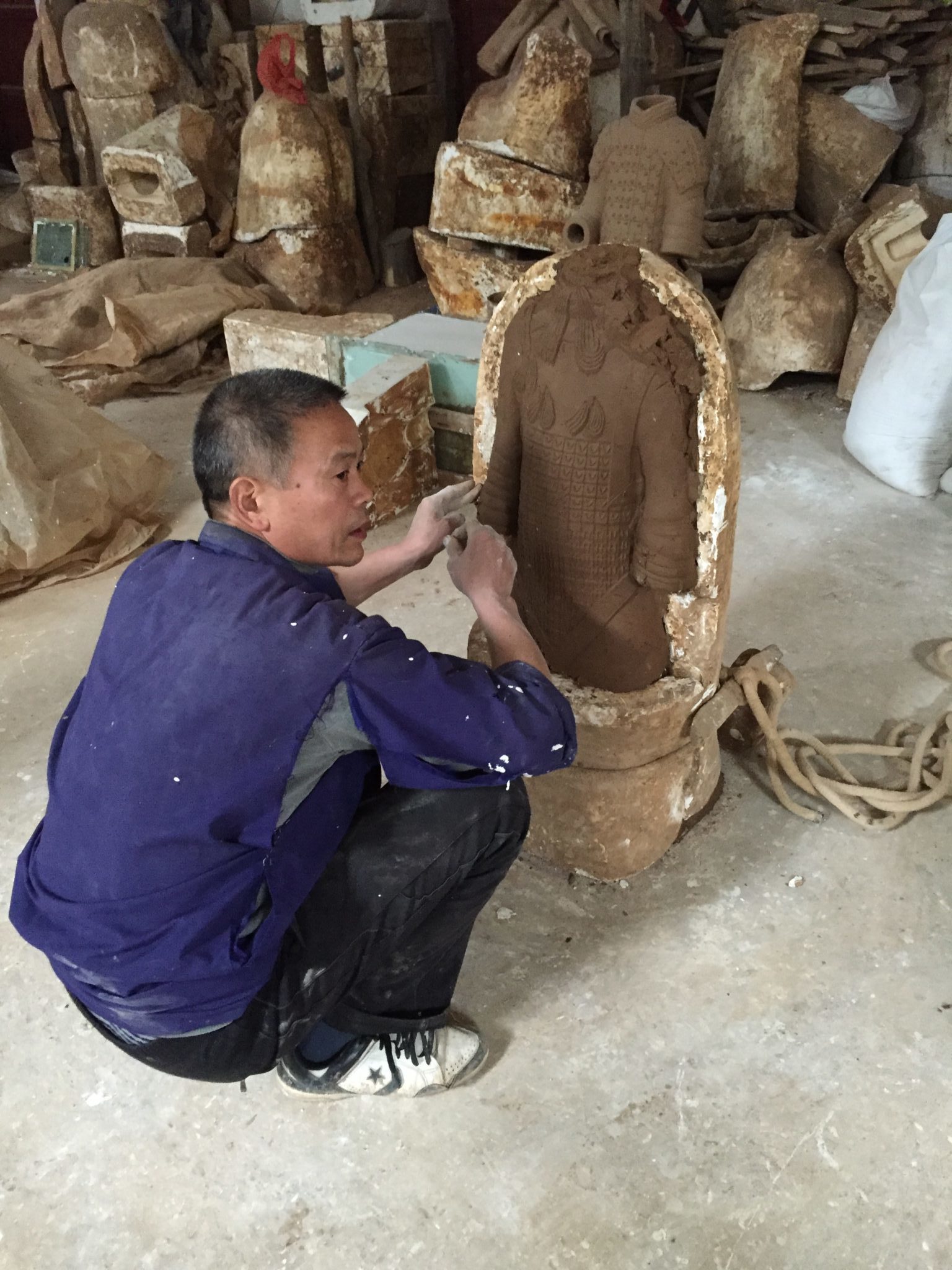
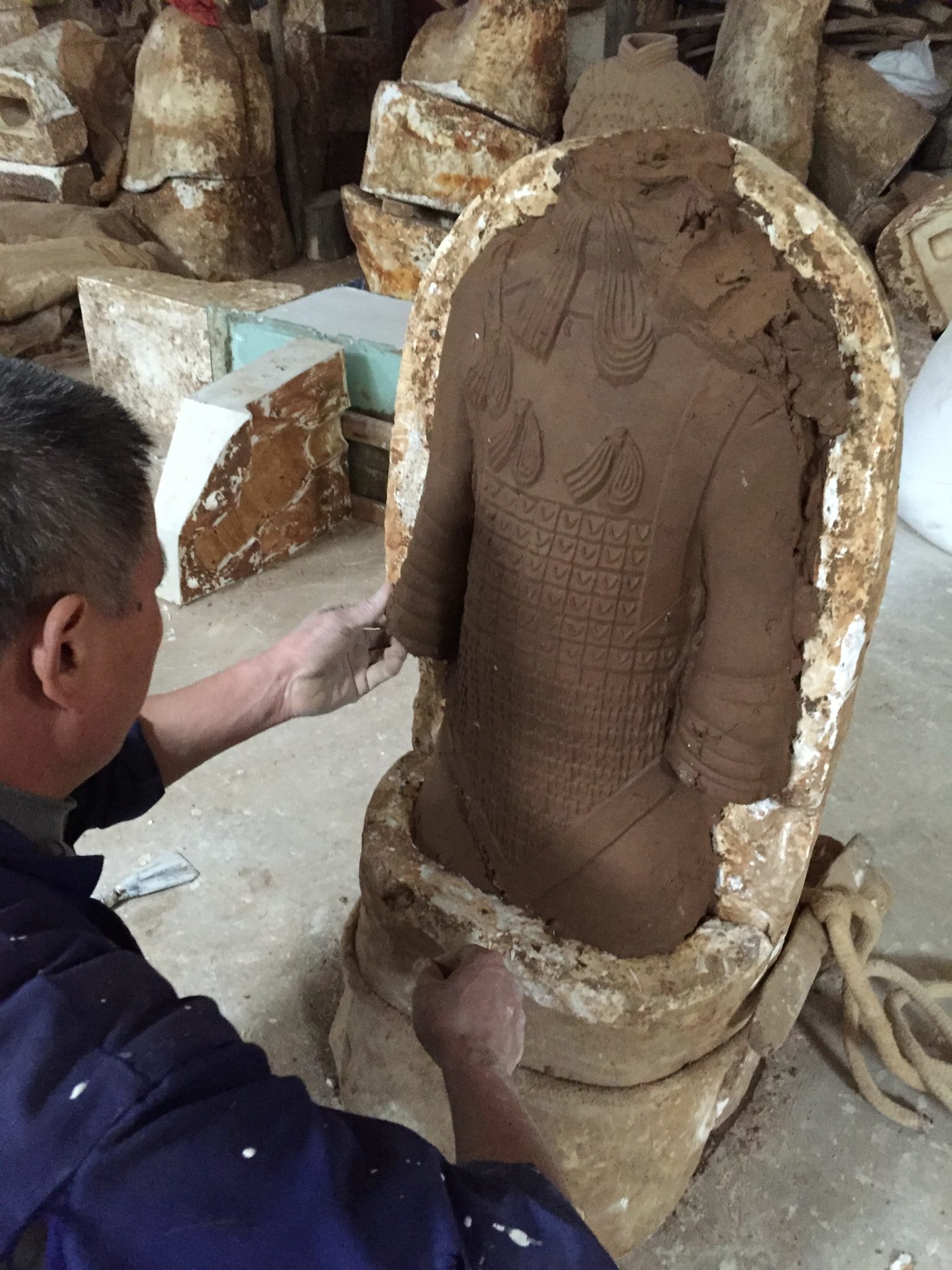
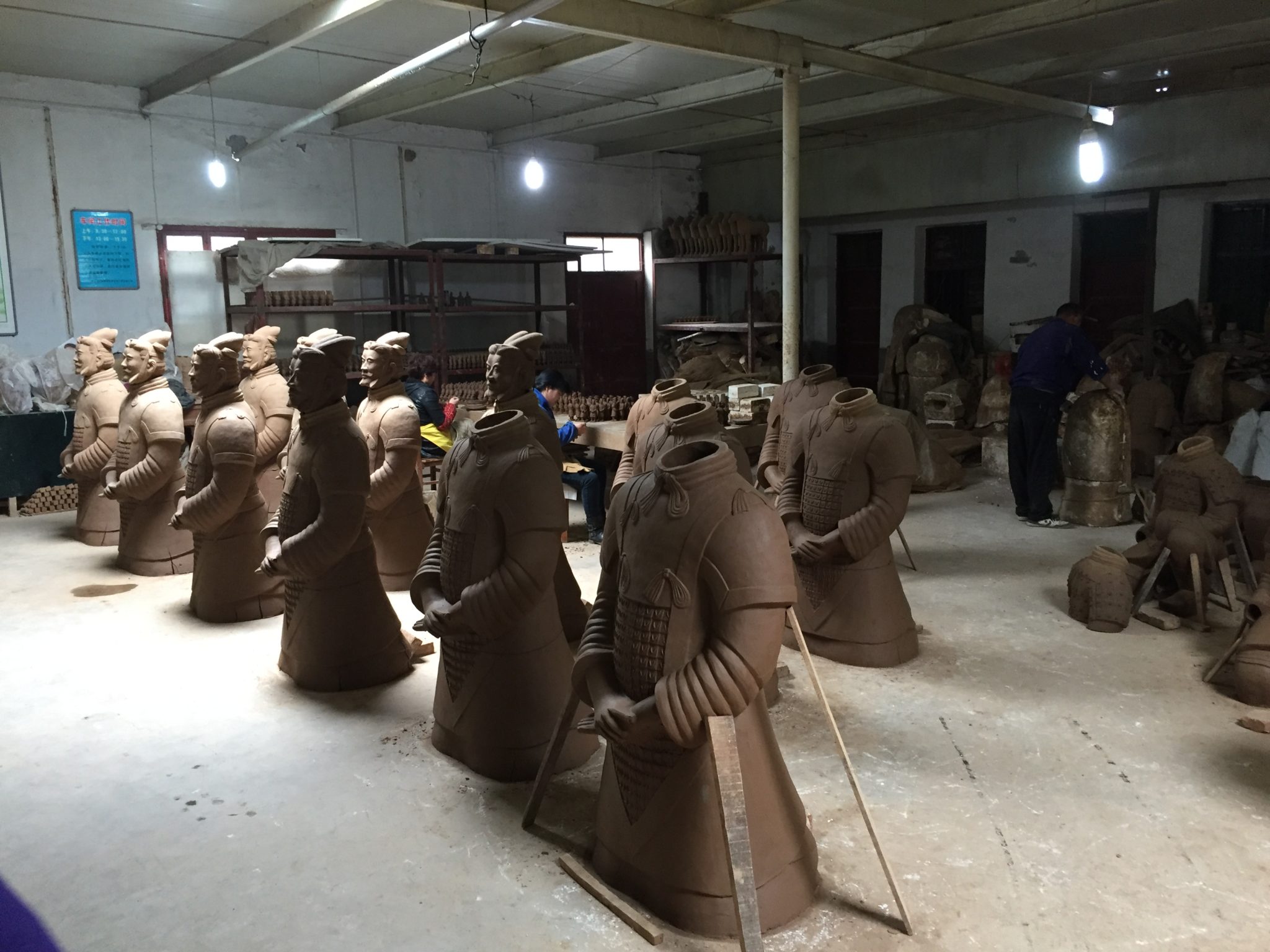
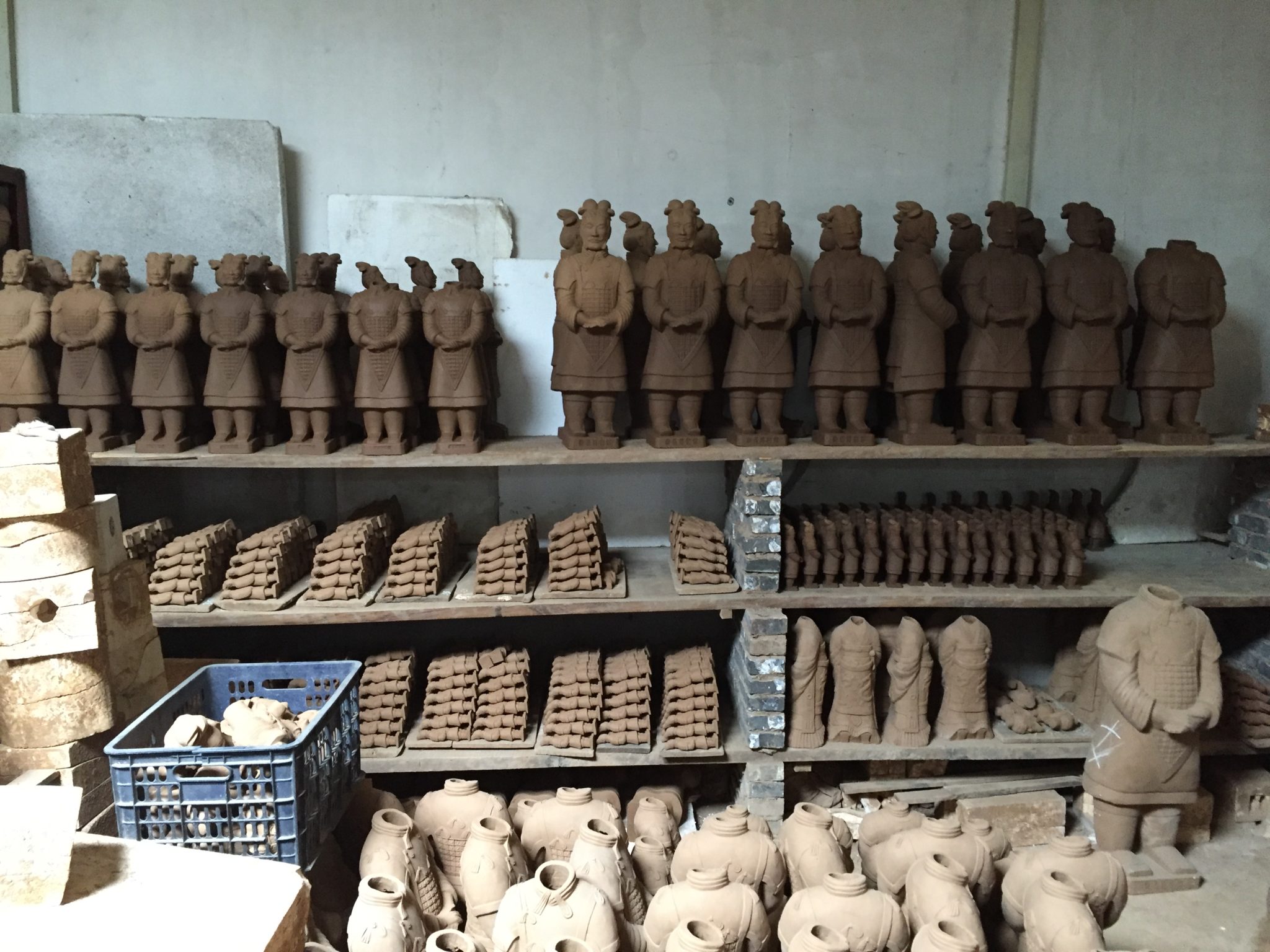

The main entrance and “Pit 1” doesn’t give you a sense of how massive this active archaeological site really is until you walk in and see this!

Pit 1 is a combined battle formation of charioteers and infantrymen. At the east end, there are three rows of vanguards and behind them is the main body of the battle formation. Around the outer edged facing south, north and west is a row of soldiers to guard the sides and rear of the army.
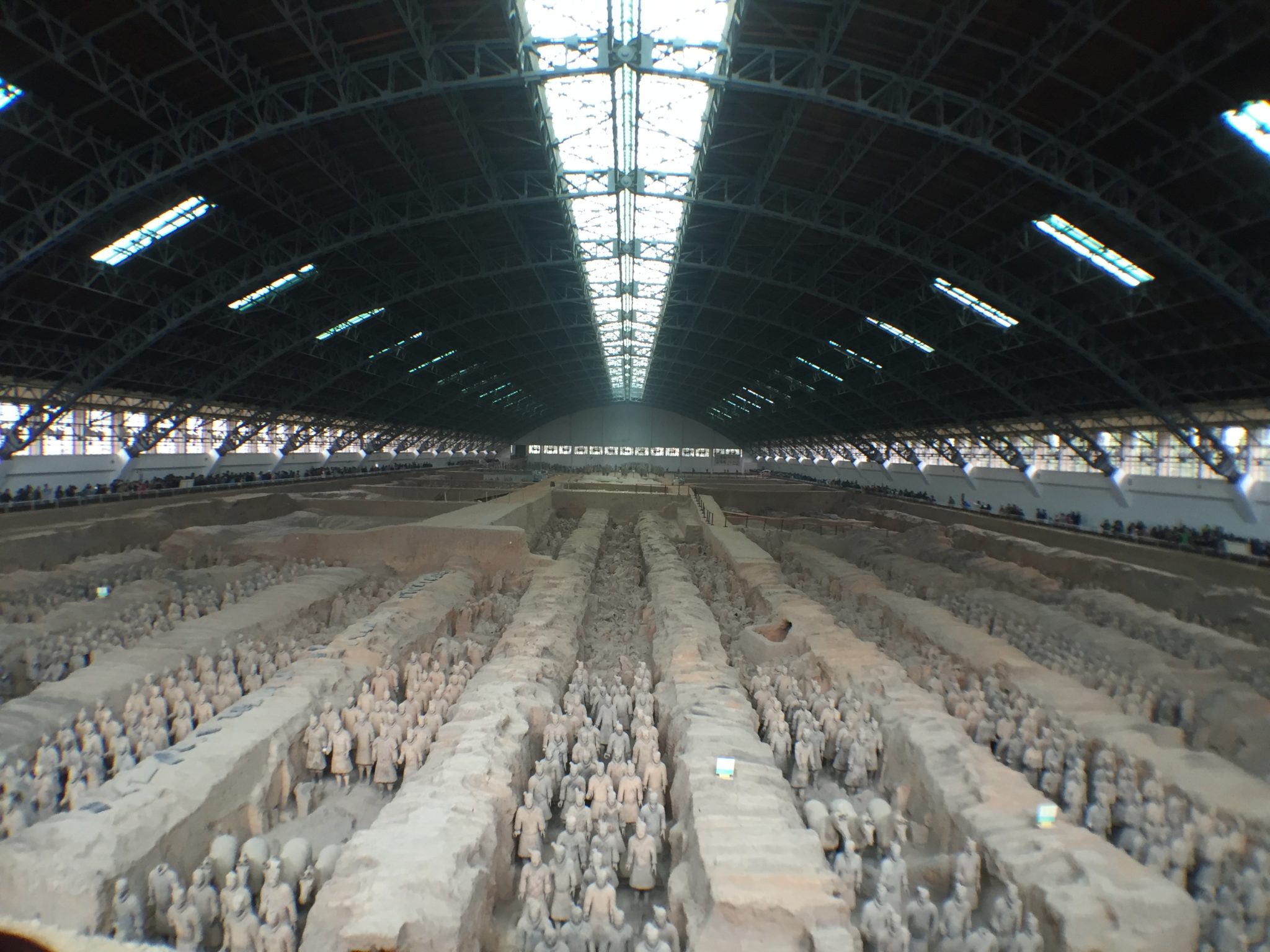
This is an active archaeological site and a ton of work still needs to be done. I wish we could have been there on a day when work was being done. This back section right now is used as the “Army Hospital” where they work on the figures they excavate and put them back together. We were told only about 20% of the work has been completed on this site over the past 20 years. Every piece is photographed, numbered, and noted so after it has been put back together, it can go back to its original place (shown later).

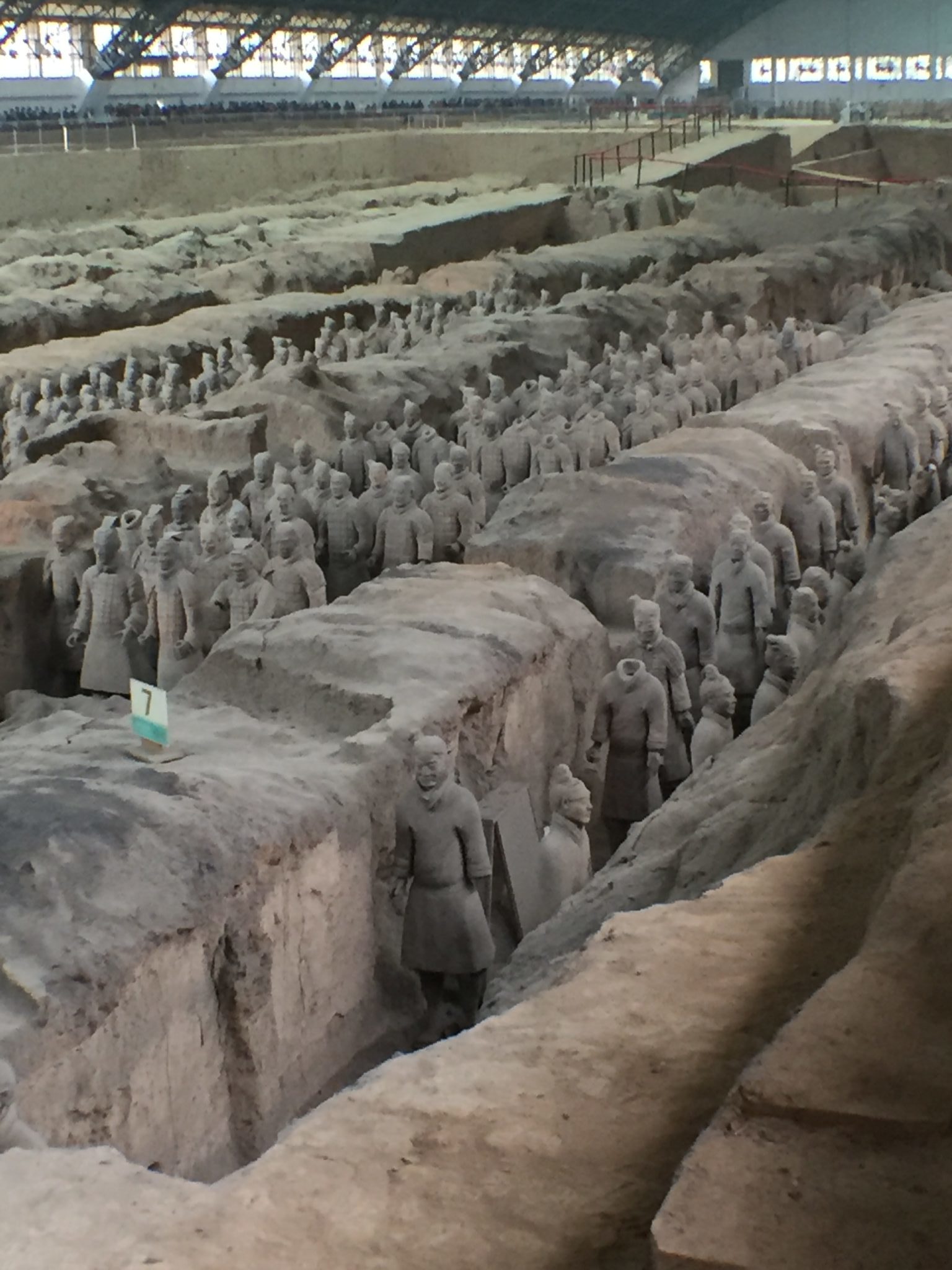
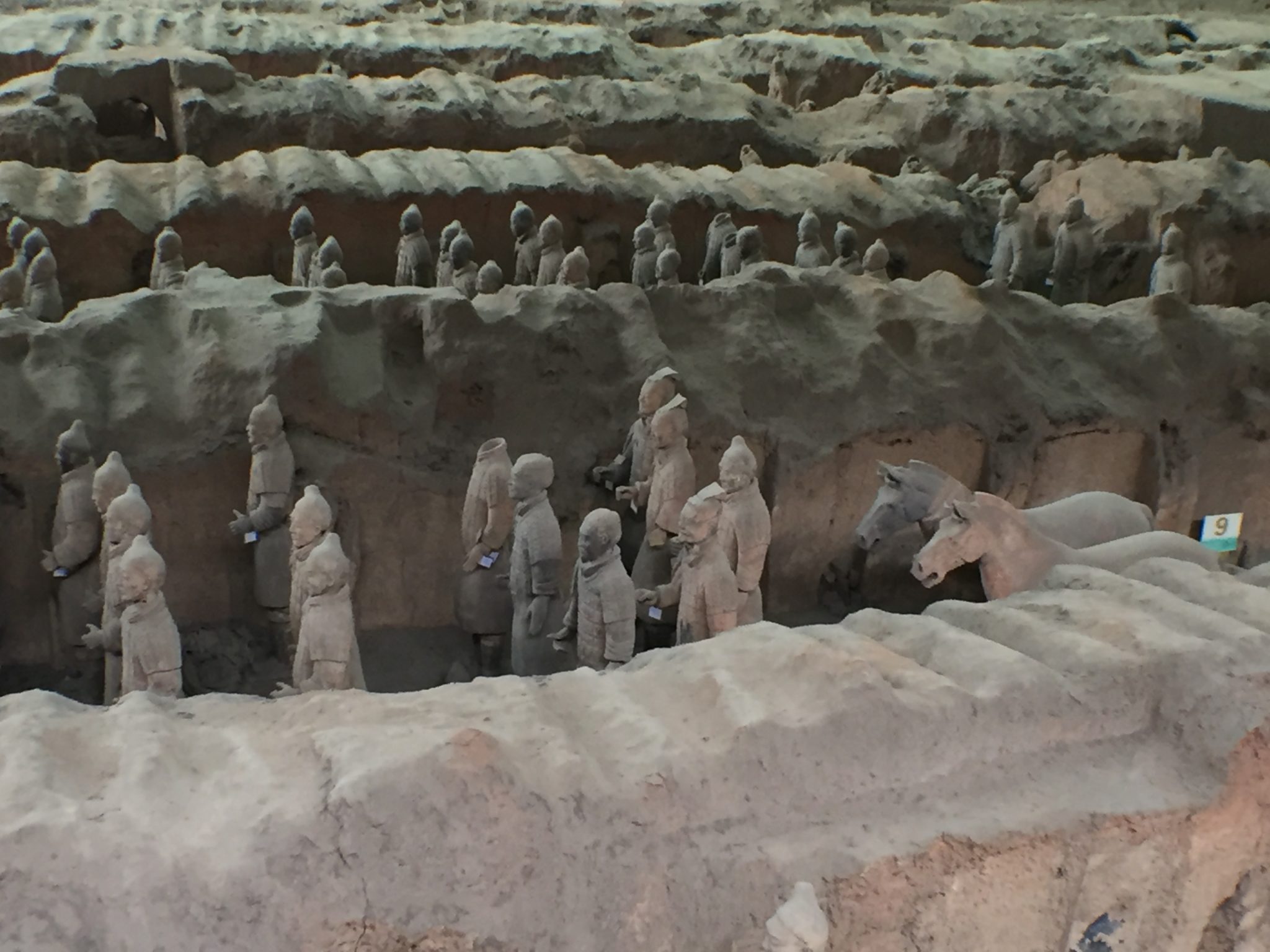




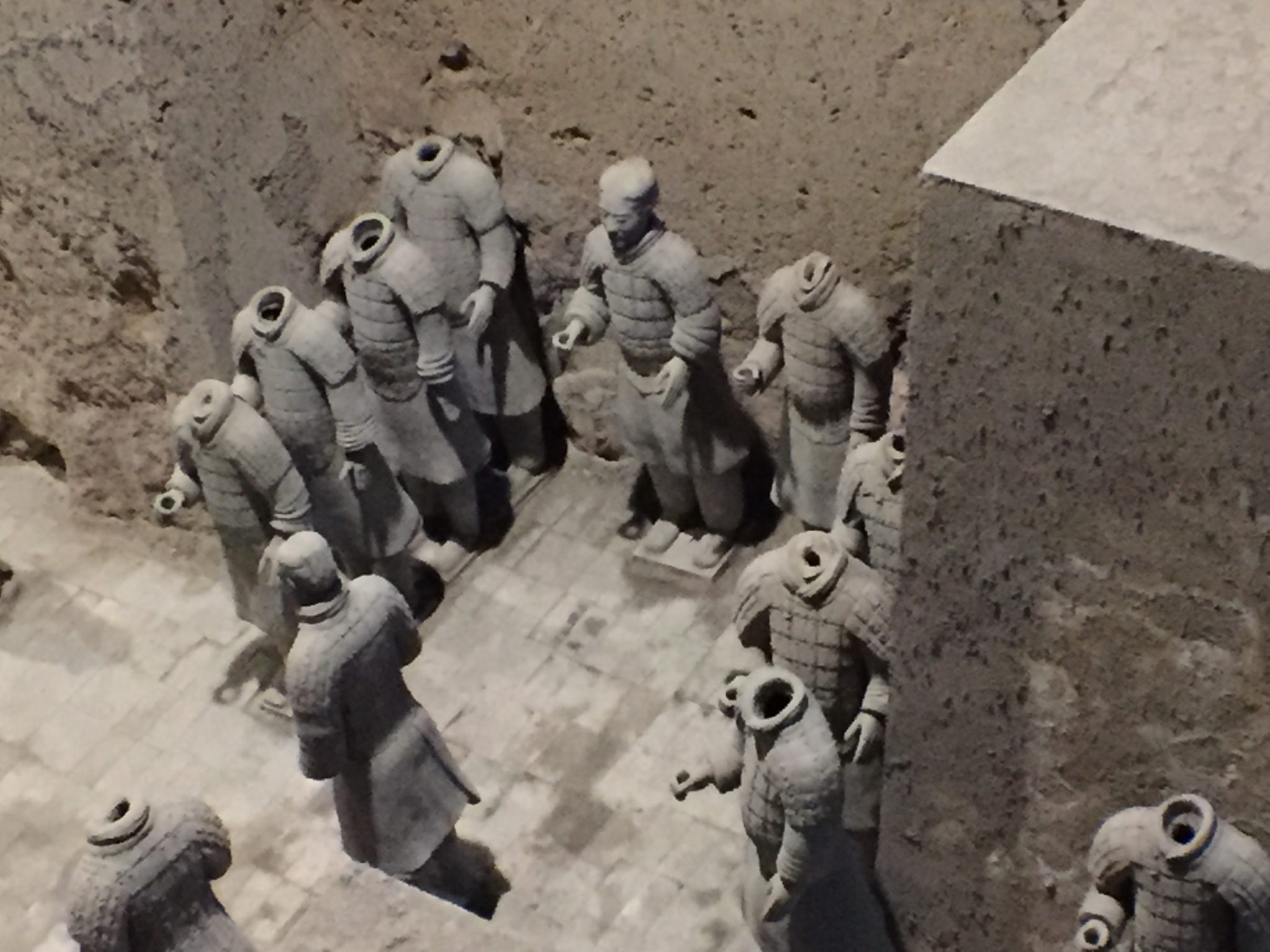
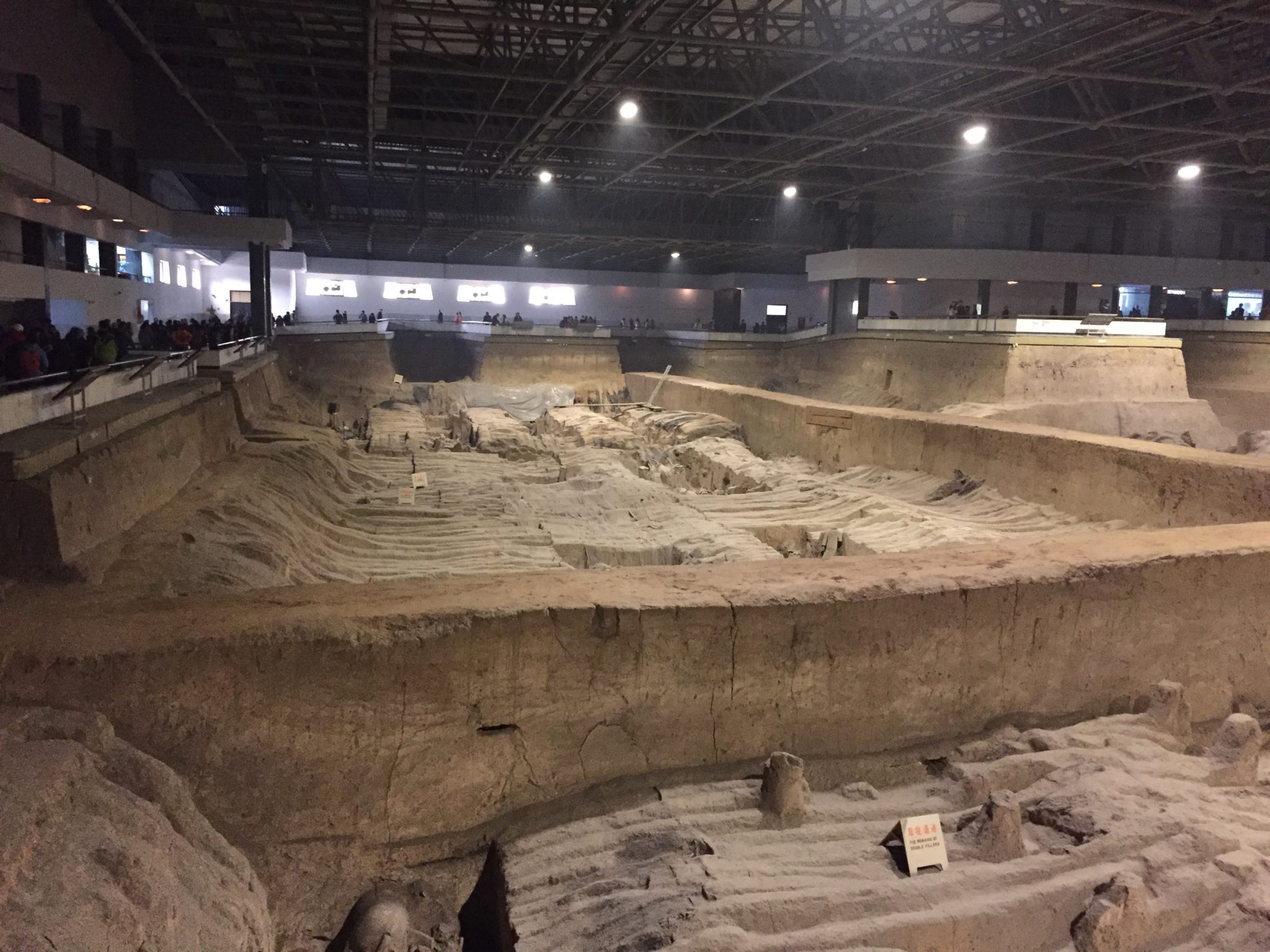

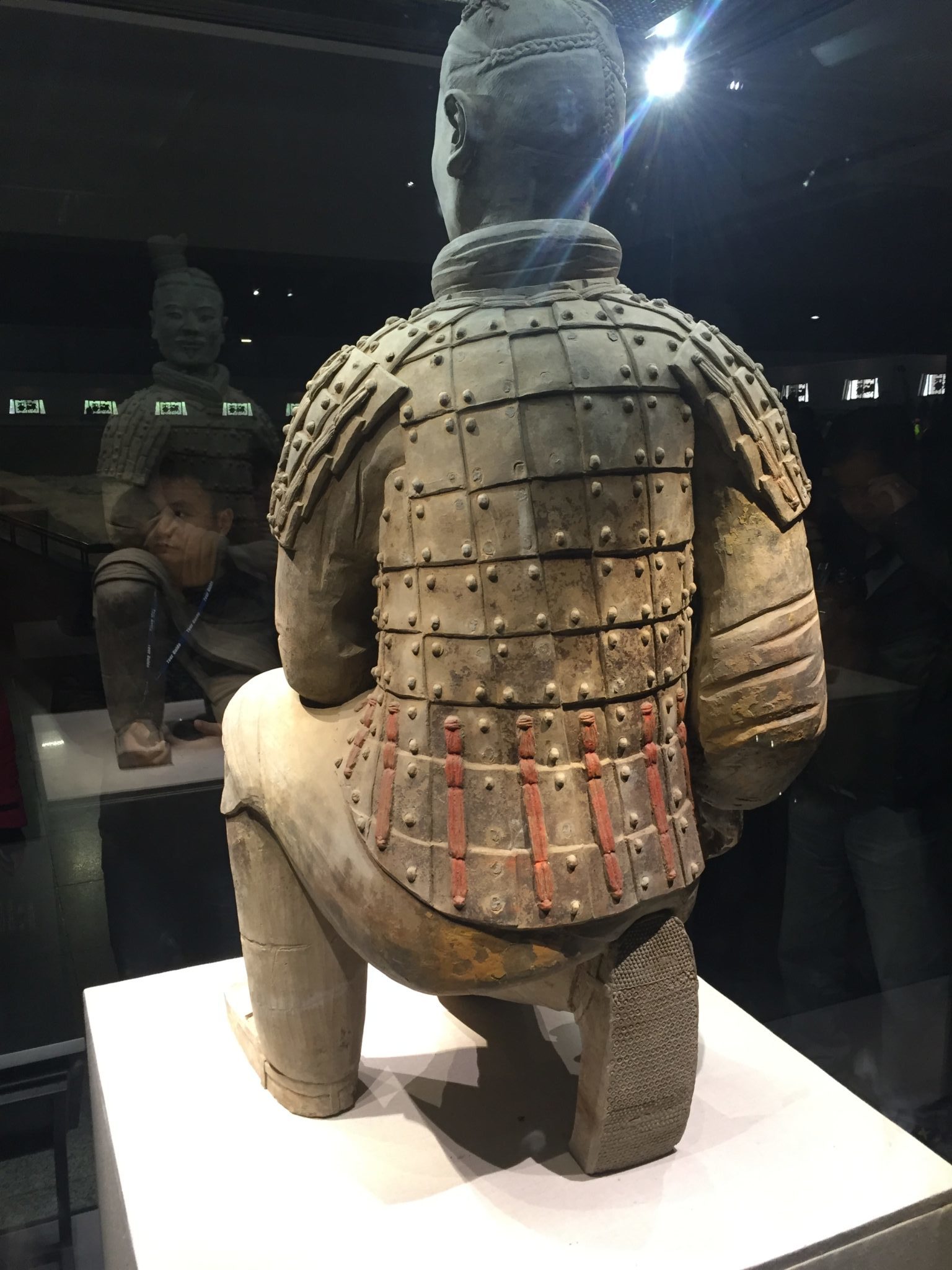
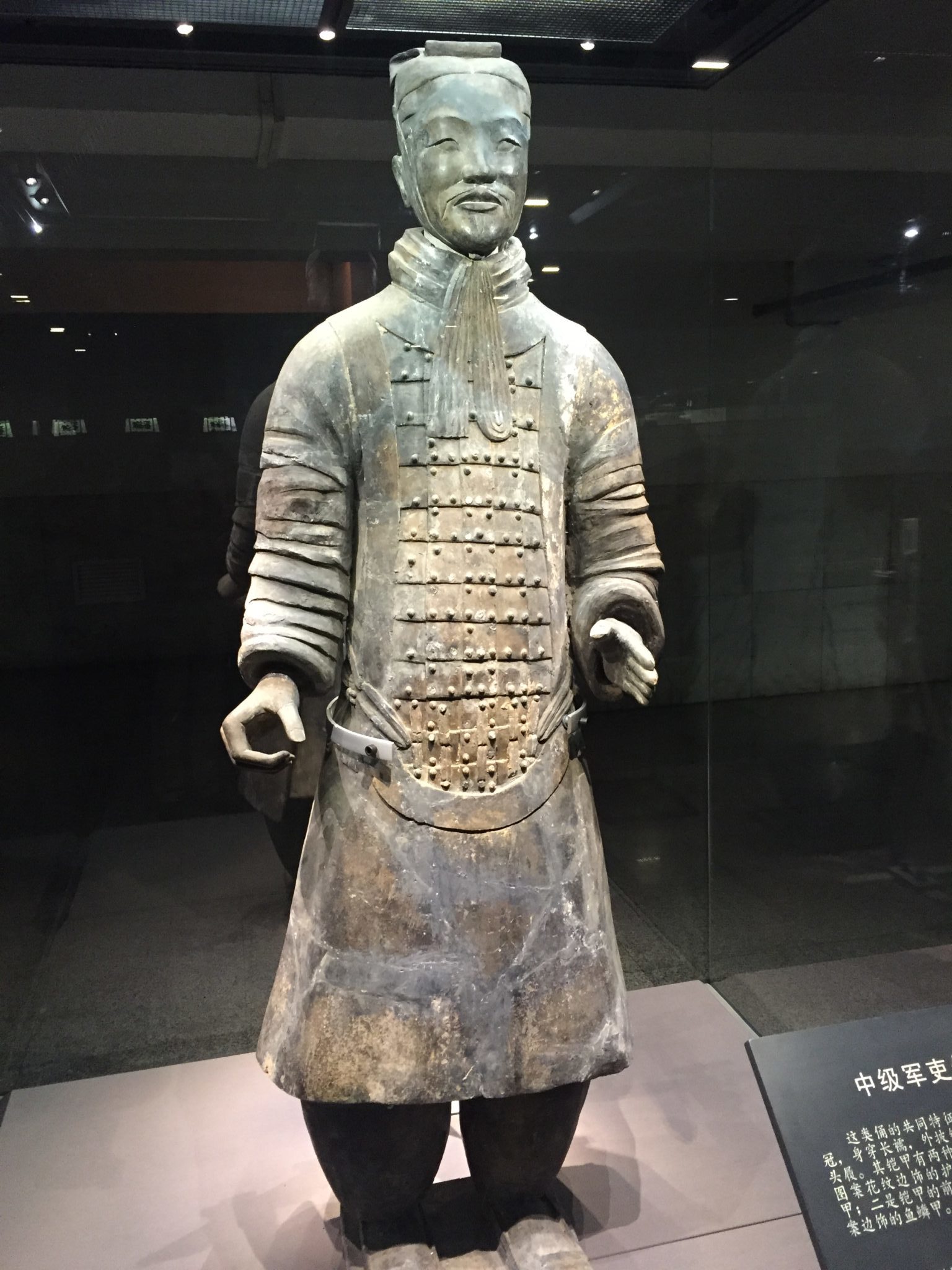
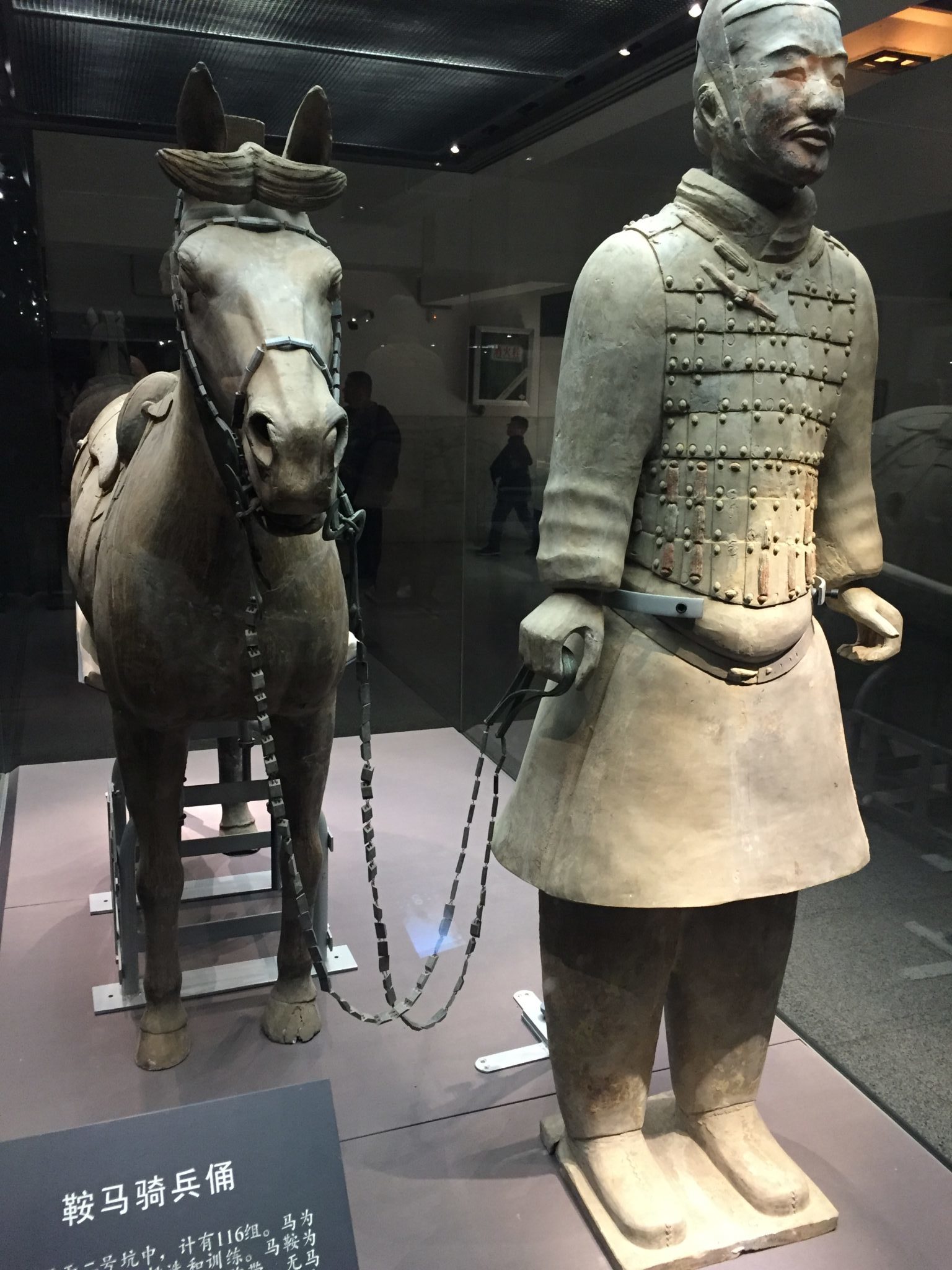

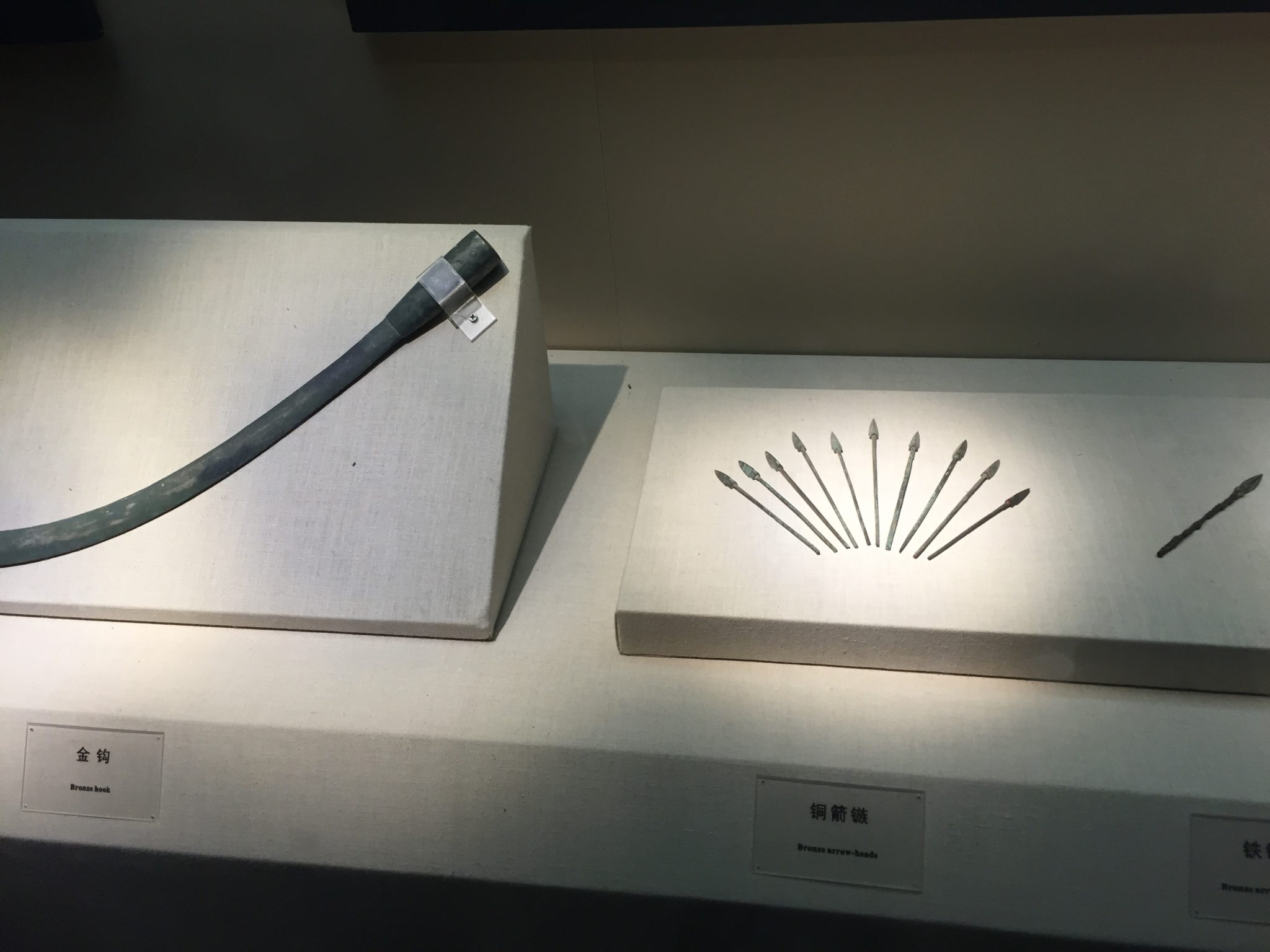
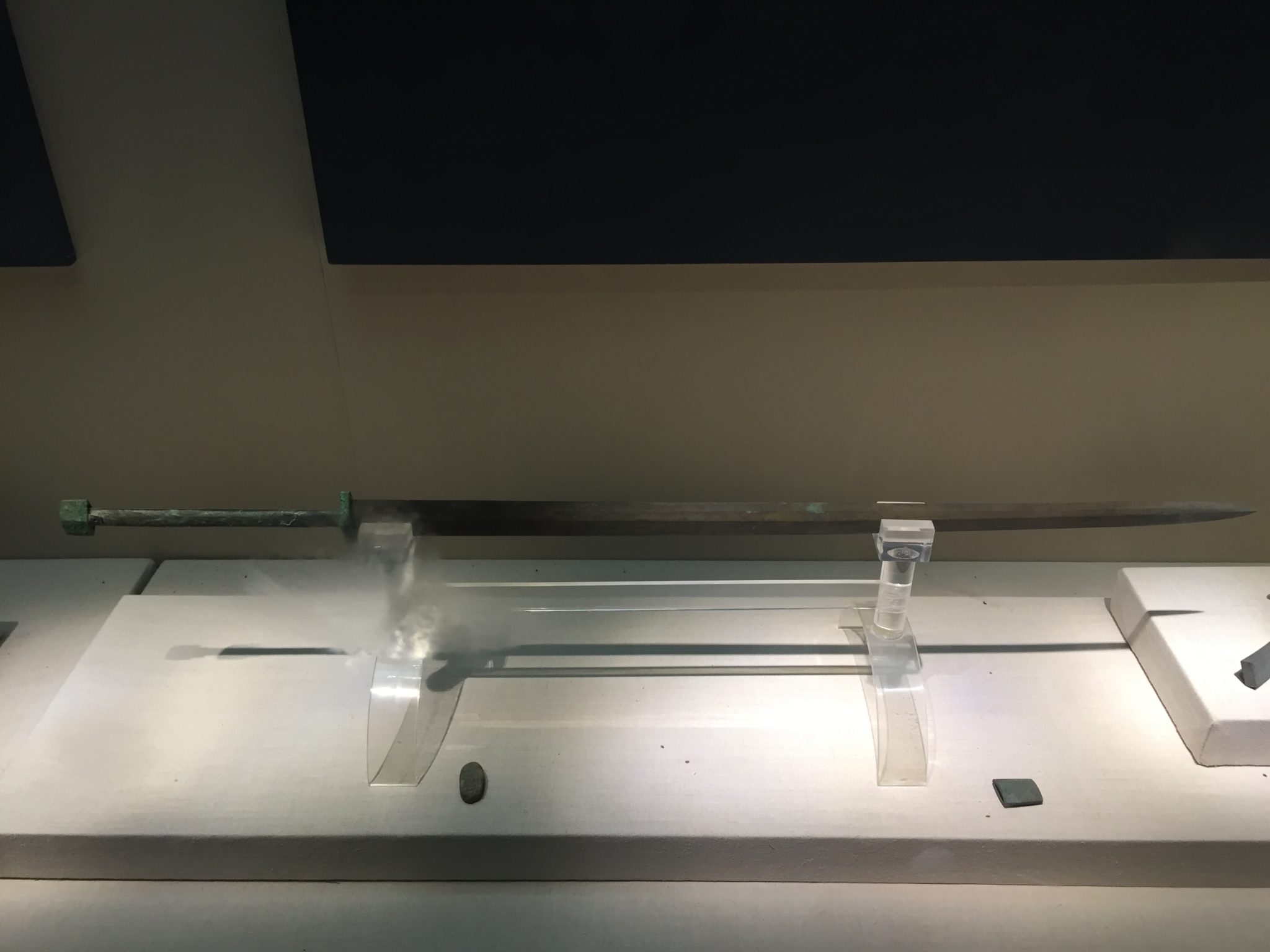
Unfortunately, only a few of the Terracotta Soldiers have been found whole and you can see them above. The rest are found in hundreds of pieces that are put together one piece at a time, like a giant jigsaw puzzle. There were wood structures with beams that went over the top of the soldiers designed to protect them but over the years, wood decayed and collapsed onto the soldiers. Some of them are beyond repair.
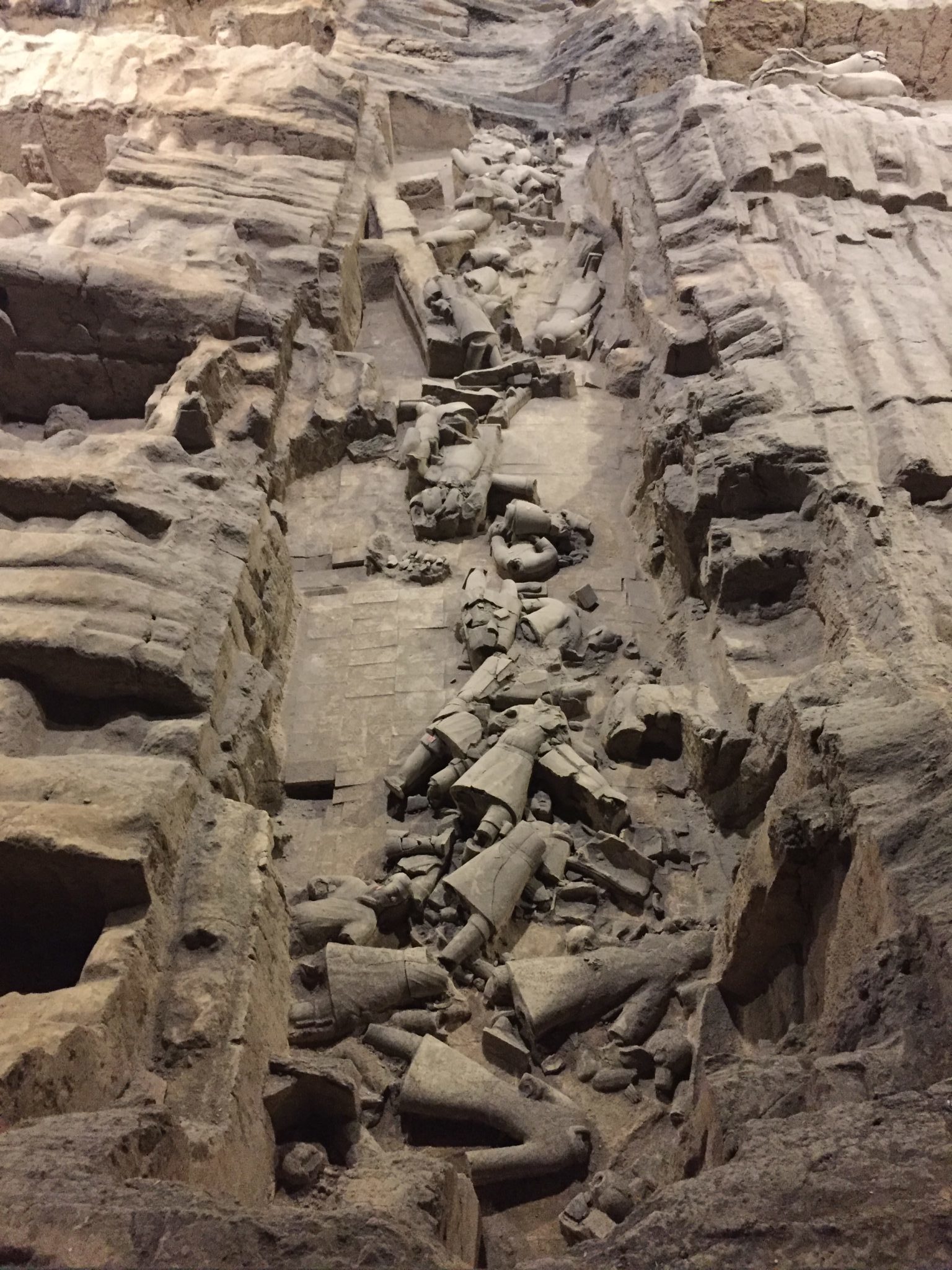
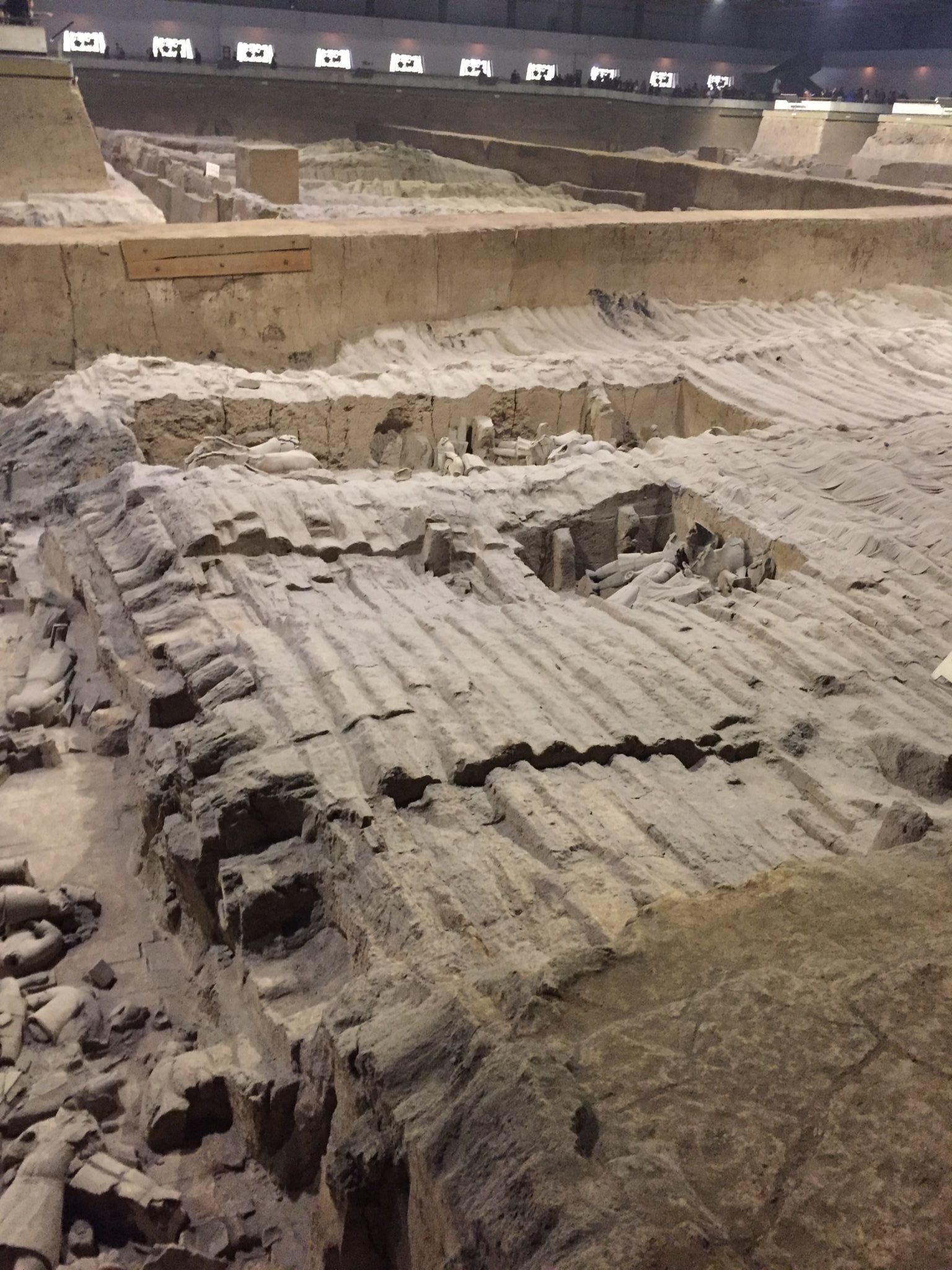
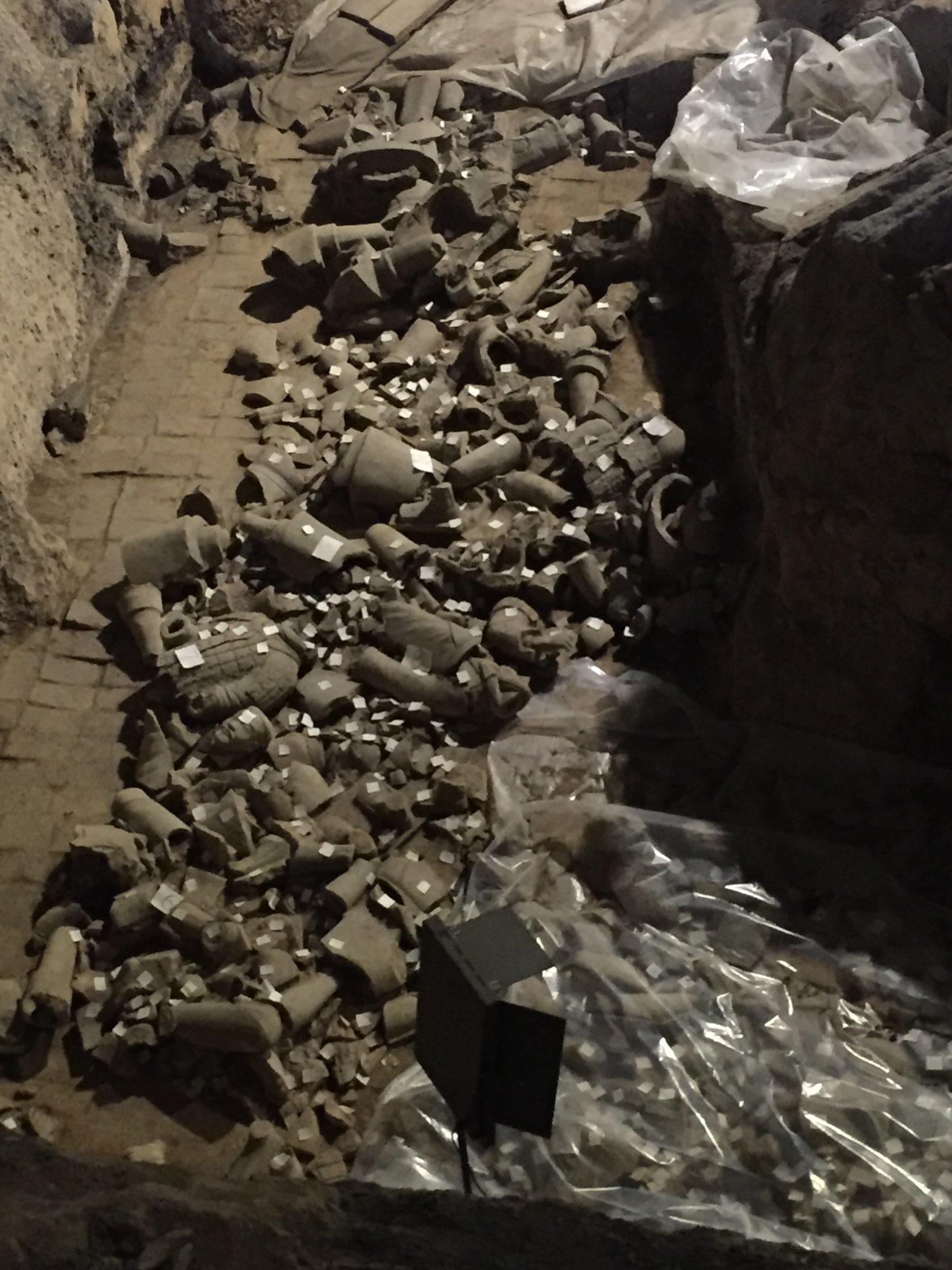
I don’t know if the Terracotta Soldiers will ever be considered one of the wonders of the world like The Great Wall, but it should be. The attention to detail that was paid to every little thing is really spectacular. If you every have the opportunity to go to Xi’an to see this in person, I would highly recommend it. The next stop is Shanghai, which is considered to most modern and European of all the Chinese cities.
